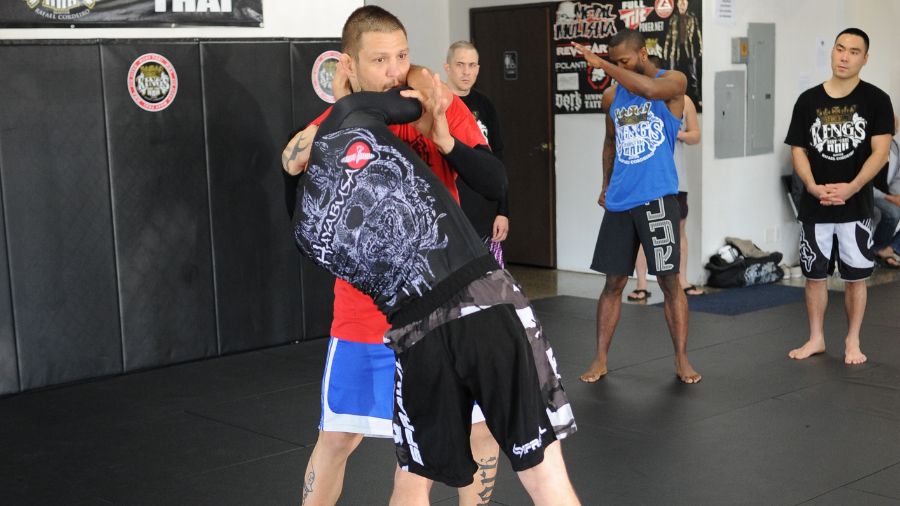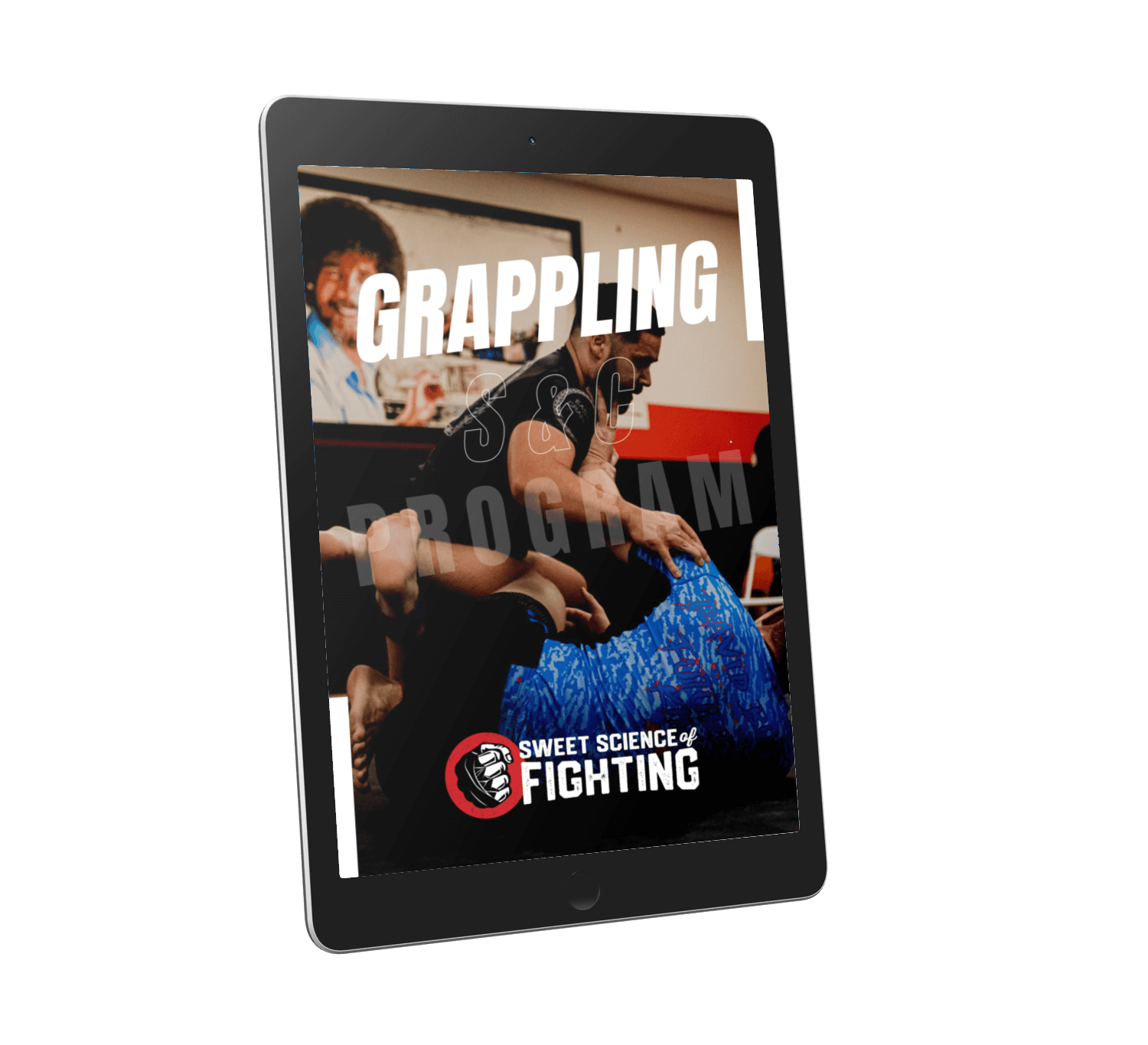Brazilian jiu-jitsu was created around the concept that a smaller and physically weaker person can use superior technique and knowledge to defeat a larger opponent. The best way to do that is to tie him to the ground where you can use this leverage. So the focus of BJJ has always been ground fighting.
BJJ teaches takedowns mainly taken from Judo and wrestling. They are used to tаке the fight where BJJ does all its best work—the ground.
However, with the rise of sports BJJ and the majority of academies focused on it, takedowns have less significance, to the point where they are not taught in some places. Let’s see why takedowns are needed in BJJ and the best ways to get an opponent to the ground.
Are Throws Taught In BJJ?
BJJ is rooted in Judo and traditional jiu-jitsu, so it has very potent takedowns in its arsenal. But unlike Judo, where the throw itself is a way to win the match, BJJ places less emphasis on how the fight goes to the ground and much more on what happens once it’s there.
Still, many judo throws are allowed and used in BJJ, like the Uchi Mata, Kouchi Gari, and the Ouchi gari.
But every BJJ match still starts on the feet, so you must have some skill in dictating where and how the fight ends. Back in the days of the infamous Gracie challenges, the Brazilians fought with a great variety of opponents, so they had to be able to take an opponent to the ground.
Another excellent argument favoring takedowns in BJJ is that it’s still a martial art. It’s not just a tightly regulated sport, and pulling guard in a street fight is ridiculous and dangerous.
Some BJJ academies leave takedowns out of the curriculum because of the rules of sports BJJ.
The modern sport of BJJ awards only 2 points for takedowns and throws and the same amount for a sweep on the ground. Many players prefer to pull guard and perform a sweep while also threatening submissions. There are quite a few high-level competitors with rudimentary takedown abilities.
Does BJJ Teach Takedowns?

Unlike in Judo, where grabbing the legs has been banned since 2010, classic wrestling takedowns are widely used in BJJ. These include double and single-leg takedowns as the most popular choices for takedown.
5 Step Blueprint To Build A BJJ Strength Workout To Demolish Your Opposition
Learn how to plan your strength training to maximize transfer to the mats.
They become essential in no-gi BJJ, where you cannot use the lapels and sleeves of a gi, which are required for many Judo throws and trips. Outside of the leg trips, the single and double-leg takedowns have the highest percentage of success in competition among higher-ranked belts.
Does BJJ Teach Wrestling?
Wrestling is the foundational grappling martial art that has existed for centuries. As such, it inevitably influences all other grappling arts. Wrestling techniques and positions have been taught in BJJ, but over time they are less and less studied in pure BJJ academies.
This is due to the increasing complexity of the BJJ game, especially when a gi is used. Because there are so many positions, guards, and submissions, there is less time to focus on wrestling techniques, so cross-training is becoming increasingly rare.
Trips and pulling guard in gi BJJ are much easier to execute physically and technically than exploding for a penetrating double leg.
Training in wrestling is far more useful in no-gi BJJ and BJJ for MMA. Wrestling can greatly supplement BJJ by developing takedown offense and defense, as well as great cardio, strength, and tenacity, all of which are essential in no-gi BJJ. Wrestling knowledge can help in a pure BJJ match in many positions on the ground.
Most Common Takedowns Taught In BJJ?
There are hundreds of ways to throw, trip, or take someone to the ground. Below are 5 of the most common and widely used takedowns in BJJ.
Double Leg
The almighty double leg is a staple in wrestling, BJJ, and MMA. Sadly, Judo banned it in 2010 to differentiate the sport from wrestling. The double leg is a takedown attack that targets both legs and is a physical movement that requires a lot of commitment and proper timing.
It’s the most popular takedown used not only in freestyle wrestling but in MMA as well. There are variations of the double leg based on the head position, but here is basic instruction on doing a double leg takedown.
- Lower your position and take a deep penetration step between your opponent’s legs.
- Drive forward with your back leg with a straight spine
- Grab your opponent behind his legs as you step further or drop your lead knee
- Step with your trail leg and drive your opponent to the mat
Remember to keep your back straight and your head up, pressed tightly to the opponent.
Single Leg
The high crotch single leg takedown is perhaps more important than the double leg and is one of the first takedowns taught in BJJ classes. As the name suggests, it uses one leg to finish a takedown and comes from wrestling.
There are many ways to set up the single leg and even more subtleties when finishing it. Still, we will look at a very effective way of doing it in the context of BJJ. This context is different from wrestling because, in BJJ, you can attack the head with a submission.
- Take a small penetration step with your lead leg and lift the hands of the opponent.
- Lower your stance while keeping your back straight and grab the opponent’s leg
- Place the leg between your legs and control it with both hands and part of your core.
- Disrupt the opponent’s balance while keeping tight control on the grabbed leg and take him down by pivoting to the side.
A single leg can be safe and effective but dangerous for the attacker. You will likely expose your neck and end up in a guillotine choke if executed poorly.
Ankle Pick
The ankle pick can work in gi and no-gi, but it’s more often done from the ai yotsu grip (meaning a same-sided lapel and sleeve grip). In no-gi, it’s usually used from a collar tie. The ankle pick is also very popular in wrestling. Here is how to do it:
- Take a couple of steps back and to the side from a collar tie or grip, creating an angle while pulling the opponent.
- Once he loses his weight, drop down and grab the opponent’s ankle without releasing his collar.
- Pull the ankle back and up to complete the takedown.
The ankle pick is much safer to do than the single and double-leg takedowns. Even if the ankle pick is unsuccessful, there are no repercussions like leaving your neck open or ending up under a sprawl. Like the rest of the takedowns and throws, there are many variations of the ankle pick, and you will see excellent BJJ players do it in several ways.
Foot Sweep
In Judo, many foot sweeps vary depending on the starting position, and many have their own names. But they follow the same general structure and are great for BJJ for a few reasons.
First, it’s safe to do because it doesn’t leave you in a compromised position even if it fails. The other main benefit is that they require a small amount of energy and strength and can be used very effectively by smaller fighters. Foot sweeps do not require strength but precise timing and anticipation, so don’t expect the sweep to work without a lot of practice.
Here is one setup of a foot sweep
- Step to the right from a collar and sleeve grip (of course, you can do this in the other direction) and move your opponent with you.
- Once you feel the weight of his body is off his left foot, sweep the foot and pull him to the ground.
Here is how this looks:
As I said, there are many variations and setups to do a foot sweep. Here is another one that is perfect for no-gi:
Uchi Mata
Often dubbed the “king of throws,” the Uchi Mata is one of Judo’s most commonly used throws. It works best when the opponent is bent forward-a position too common among BJJ players and wrestlers. Again, there is a difference between gi and no-gi applications, but the Uchi Mata is very powerful in both.
Here is one effective way of doing an Uchi Mata while in a gi:
- Pull the collar and sleeve of the opponent towards you and step forward
- Step with your support foot in between the opponent’s feet and turn 180 degrees
- Lift the opponent’s hips by going under them and sweep backward with your non-supporting leg.
- Continue pulling the lapel and sleeve the whole time.
There is a possibility the drive is not strong enough, and the opponent remains on one leg. In this case, continue dragging him until you eventually torque him down. Many variations of Uchi Mata exist, some of which translate better to BJJ than others.
In no-gi BJJ, the collar grip is replaced by a whizzer. The rest of the motion is generally the same. Here is an excellent example:
Summary
Takedowns are not as crucial in BJJ as in other grappling arts like wrestling and Judo, but they are still taught and used. To be a complete martial artist or even a grappler, you need to learn how to take someone to the ground and defend against the most common takedowns and throws.
There are hundreds, if not thousands, of different ways to take someone to the ground, but you don’t need to know all of them. Focus on just a few that fit your style and physique, learn them properly, and you will feel more confident and capable in competition, on the mats, or the street.


